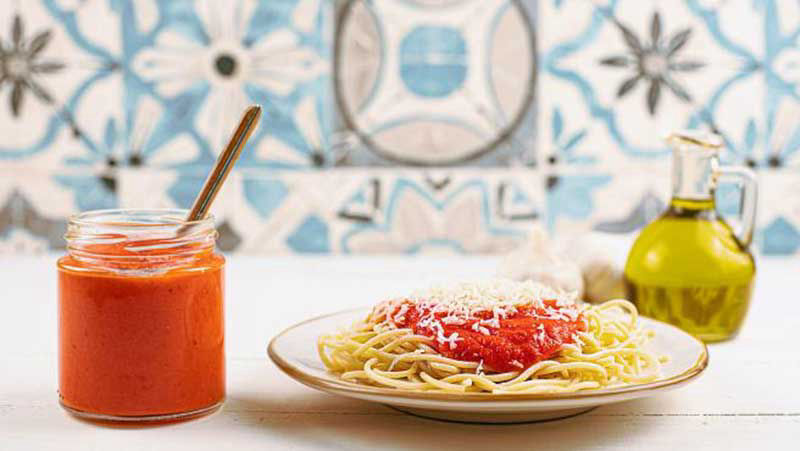
Questions and answers about sauces
How do you make sauce from scratch?
How do you make creamy pasta sauce from scratch?
How do you make a good pasta sauce from scratch?
How do you make italian sauce from scratch?
How do you make Alfredo sauce from scratch?
How do yo make sauce?
What are the 5 types of sauces?
How do you get sauce to stick to noodles?
What are the 6 mother sauces?
How do you make rib sauce from scratch?
What are the best sauces?
What is a good sauce to put on rice?
What is the most popular sauce in the US?
What is the mos used sauce in the world?
What is the top selling condiment?
What are the different types os sauce?
What are the 4 basic sauces?
What are the daughter sauces?
What two mother sauces do not use a roux?
What flavor characteristics do sauces add?
Making sauces at home is relatively easy, you just have to have the ingredients and feel like making it, it is clear that it is easier to buy a pot but it is much better to make it at home, it is much cheaper and we can always change an ingredient to adapt it to our tastes. If you look at most of the sauces they do not take much work, they have few ingredients and can be used for many dishes, for example the tomato sauce on our page, it takes very few ingredients, you can add some that give it a special flavor that you like And you can use it in a lot of dishes, in any pasta dish, in a hamburger, with rice, etc. See the tomato sauce recipe.

Questions and answers about sauces
It is a complicated question, sometimes the sauce, depending on the ingredients it contains, may be more or less creamy, more or less liquid. For example, a tomato sauce that has been very liquid or because we want to use it for something thicker, you can add cornstarch or sifted flour with a strainer, we add little by little and we see the result. You could also add a little cream cheese, it would thicken and make it a little whiter for the cheese depending on the recipe for the sauce, the cream cheese can be very good, for example with pasta.
If, on the contrary, it has become very thick and we want it more liquid we can add a little water, if we see that it is still very thick add a little more, until it is to our liking, but keep in mind that you are diluting the sauce hence the taste as well. Once of water and depending on the sauce you can add meat, vegetable or fish broth.
There are many ways to make Italian tomato sauce, and depending on who you ask, and where their family comes from, you will find different recipes. And it is that this matter is something very personal, since each family has its own recipe and a flavor that brings back memories of their home ... I bring you a traditional recipe for the typical Italian-style tomato sauce.
To prepare it, it is essential to start from a good base, for this the best tomatoes are pear tomatoes, since they have a lot of meat, a balanced flavor and above all they have very few seeds. In addition, they are very red tomatoes, so they give a very good color to the final result, although far from commercial fried tomatoes.
To make the Italian tomato sauce, fry garlic and onion in plenty of extra virgin olive oil, then add the crushed tomatoes. For this we can peel them and pass them through the blender; or grate them by hand with a grater, as you like. Then we add a generous amount of basil, oregano or the spices and condiments that you like the most and let it simmer for at least 45 minutes. It will be ready to accompany a good plate of spaghetti or as a sauce for an Italian lasagna.
There is no single recipe, you can see another option in our recipes, we are going with a variation that is also very good.
Alfredo sauce ingredients:
Cream- Thick whipped cream for a richer flavor. You can substitute half and half or milk for a healthier and lighter option.
Milk- Helps balance the richness and thickness of the sauce.
Butter- Unsalted butter adds a depth of flavor to the sauce.
Garlic- Enhances the mild flavor.
Parmesan Cheese- Although we use grated cheese, you can grate fresh cheese for best results.
Salt and pepper
How to make Alfredo sauce?
In a large skillet or saucepan with a thick bottom, add the butter and minced garlic. Cook until the garlic becomes fragrant.
Over low / medium heat, add the milk and heavy cream.
Add the Parmesan cheese and season with salt and pepper to taste. Keep beating until well incorporated so it doesn't separate.
Cook until sauce thickens, stirring frequently.
When you once think of Alfredo sauce, the first thing that comes to mind is some type of pasta and you are right. However, don't limit the creamy sauce to just pasta.
According to the authors, it can be 4, 5 or 6 mother sauces, see our History of sauces page for more information.
Dutch
The main base of this sauce are egg yolks and butter. You can find it in eggs Benedict, salads, and some cuts of beef. Its derivatives are: bernese sauce, choron, paloise and maltaise.
Bechamel
The base of the bechamel sauce is a roux (flour and butter), it is frequently used in fish, eggs and chicken. Its derivatives are: aurore, soubise, mornay and natua.
Veloute
The veloute sauce is made from a white meat broth and a roux. It is common to find it in eggs, fish, pasta and dishes with veal.
Spanish
This sauce is made from a beef broth and a roux. It is regularly served with cuts of red meat such as: veal, venison, lamb, and duck. It is one of the most important mother sauces because it is from this that the Bordeaux sauce and the demi- glace (which is made with the residues of the pan where the meat is cooked) derive.
Mayonnaise
Probably one of the most popular and with the most variations. The main base is egg yolk and oil. Its main variations are the aioli, the remoulade and the gribiche. This sauce is found in hamburgers, accompanying fish and vegetables.
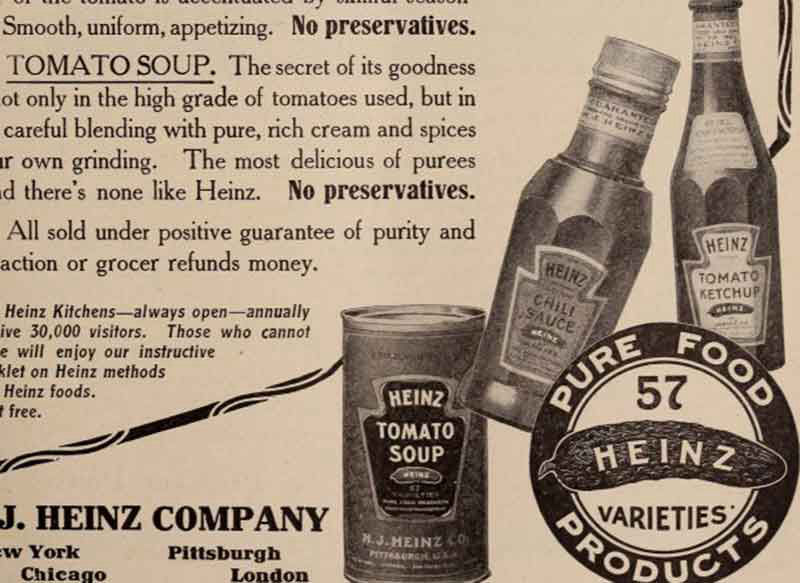
Questions and answers about sauces
A series of key tips that, if you follow them, will give you a good result and you will not have to deal with a stuck pasta and that the sauce adheres well to the pasta.
1.- First, do not remove the starch by washing the pasta in the wringer. Although it is true that if you remove it, it will not stick, the starch is what ensures that the sauce adheres well to the food we are cooking. Only use the drainer to remove the cooking water, nothing more.
2.- Have the sauce ready before the pasta is done. This way you mix it immediately and you will prevent it from sticking when you remove it from the pot.
3.- When cooking the pasta, add it to the water when it is already boiling, and do it little by little so that the water does not cool down and stop boiling. This does not mean that you have to add the macaroni or spaghetti in several minutes, since if you do this, one part will cook well and the other will be tough. What you have to do is pour it part by part, spacing a few seconds each handful that you pour into the pot, so that the fire can keep the water at the maximum temperature.
4.- Stir the contents of the pot while you cook. It will help it not to stick.
5.- You don't have to pour oil into the pot. Many people make this decision to get out of trouble and, although it is not bad at all, if an Italian sees you he will tell you that you are greasing the food and it will seem that you have committed a sacrilege.
The most widespread belief is that mother sauces were born in French gastronomy, at least the main ones did. Antonine Carême was the first to classify sauces, he distinguished between cold sauces and hot sauces; but he went further and distinguished 4 sauces as the mother sauces of the kitchen:
German: beaten egg and lemon juice.
Bechamel: flour, butter and milk
Spanish: brown beef, beef, etc.
Velouté: light fish, chicken and even venison broths.
Those were the 4 mother sauces of the kitchen, until at the dawn of the 20th century, chef Auguste Escoffier replaced some sauces and added a new one to the list. Since then the list of the 5 mother sauces of Escoffier is the one that is taken as valid. You will notice that there are 6 in the list, it is that the hollandaise sauce and mayonnaise came to replace the German sauce, while the Pomodoro tomato sauce was incorporated.
Bechamel, Spanish, Dutch, Mayonnaise, Pomodoro and Velouté
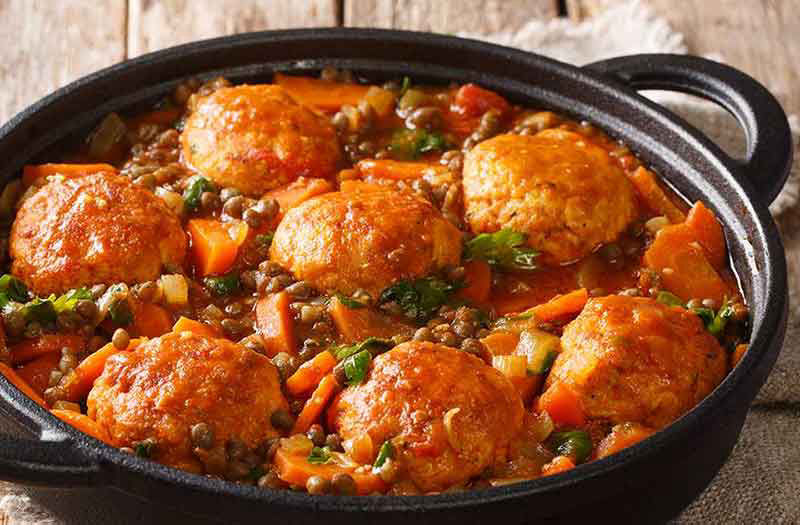
Questions and answers about sauces
We all love ribs, you can make them baked, with rice, with pasta, grilled, etc.
You can make a sauce for ribs from scratch, here it goes a little to personal taste, you can find a recipe that you like on our page and make it with the ribs.
Any ideas:
- Pork ribs with barbecue sauce (baked or grilled)
- Pork ribs lacquered with bay leaf and Coca-cola
- Pork ribs in teriyaki sauce
- Pork ribs with curry and honey
- Camelized pork ribs with apple jam
- Pork ribs with sweet and sour peach sauce
- Pork ribs marinated with soy sauce
- Ribs stewed with curry
- Potatoes stewed with marinated ribs
- Macaroni with pork rib
Rice sauces are key in these types of recipes. Rice is a cereal that is generally made cooked and does not have much flavor. Hence, the sauce acquires so much relevance. It will be the sauce that accompanies it, the one that will make a simple cooked rice, become a tasty and appetizing rice dish. What a sauce that accompanies a dish — and, in this particular case, rice — should do is season and add color. The flavor of the sauce is very important, of course, but it should never be so strong that it masks the flavor of the main ingredient that we are going to consume. If that happens, the sauce would not be suitable for that product. Above all, you have to be especially careful when the rice is accompanied with more ingredients that add flavor to it. Sauces that we could cook to accompany a delicious rice are: tomato sauce, bolognese, vegetable sauce, pink sauce, bittersweet, with garlic, aioli sauce or vinaigrette, among many more. Rice, being a somewhat more insipid ingredient, allows us to let our imagination fly and encourage us to create a sauce that we like and feel like
It is a very difficult question to answer, we have not found any site that has reliable data, we must bear in mind that each country has its sauces and customs. It would also be necessary to differentiate between populations of countries, perhaps the most consumed sauce in India is not in the world but by inhabitants of India it would be one of the most consumed. If I had to bet, I would do it for ketchup, it is the most consumed in the US and I don't think there is any country in the world where it is not consumed to a greater or lesser extent.
If by seasoning we mean spices, perhaps the two most consumed are pepper and curry.
Pepper comes from a climbing plant whose fruits are berries. When they are not ripe and dry, they constitute black pepper with an intense flavor; more aromatic is the white one, whose grains are ripe and dry. Green pepper are tender berries preserved in brine, aromatic and a little bitter. It comes from southern India, from the Malavar Coast and is also cultivated in Indonesia, Malaysia and Brazil. It can be used in both savory and sweet dishes and is recommended whole to grind it at the time of use.
Curry is used by all oriental cuisine, it is a fundamental condiment in India, Southeast Asia and the Caribbean and it is a mixture of between 16 and 20 powdered spices. The main ones are turmeric, cinnamon, cloves, coriander, cumin, ginger, pepper and others that give it its characteristic aroma. The hottest and strongest is Madras curry.
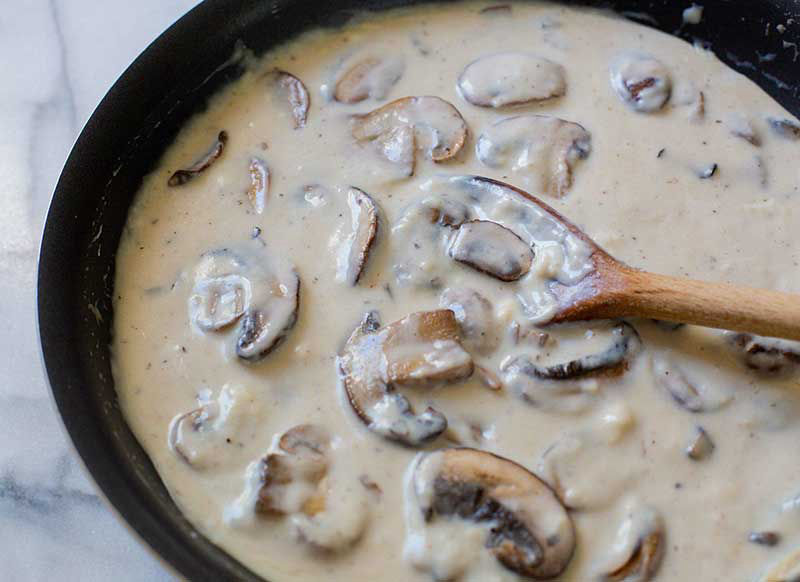
Questions and answers about sauces
In the 19th century, a renowned French gourmet named Marie Antonine Carême, described the first four base sauces that he used. Later others were added and in the 20th century, chef Auguste Escoffier added a new list, which is the one currently considered in which there are 5 or 6 mother sauces.
German: beaten egg and lemon juice.
Bechamel: flour, butter and milk
Spanish: brown beef, beef, etc.
Velouté: light fish, chicken and even venison broths
Those were the 4 mother sauces of the kitchen, until at the dawn of the 20th century, chef Auguste Escoffier replaced some sauces and added a new one to the list. Since then, the list of the 5 mother sauces of Escoffier is the one that is taken as valid. The hollandaise sauce and mayonnaise came to replace the German sauce, while the Pomodoro tomato sauce was incorporated.
The daughter sauces are those that derive from the mother sauces, adding ingredients, mixing with others, etc., We give you an example of the mayonnaise mother sauce, others can come out:
Tartar: mayonnaise + pickled gherkins + hard-boiled egg + capers + onion + chopped parsley.
Chantilly: mayonnaise + lemon juice + semi-whipped cream at the last minute.
Rosa: mayonnaise + kepchup + orange juice + cognac + perrins + tabasco.
Bahia: mayonnaise + kepchup + Pernod + cognac + tabasco + perrins + lemon juice + fine herbs + semi-whipped cream at the last minute.
Gribiche: mayonnaise whipped with hard-boiled egg yolk + mustard + lemon juice + chopped parsley + gherkins + capers + tarragon + chervil + egg white julienne.
Remolada: mayonnaise + mustard + pickles + capers + chopped parsley + tarragon + anchovies.
Tyrolean: mayonnaise + tomato puree + chopped onion.
Niçoise: mayonnaise + tomato puree + shallot + garlic + tarragon + spring onion.
Swedish: mayonnaise + applesauce + grated horseradish.
Musketeer: Mayonnaise sauce + shallot reduction with white wine + chopped chives + cayenne pepper.
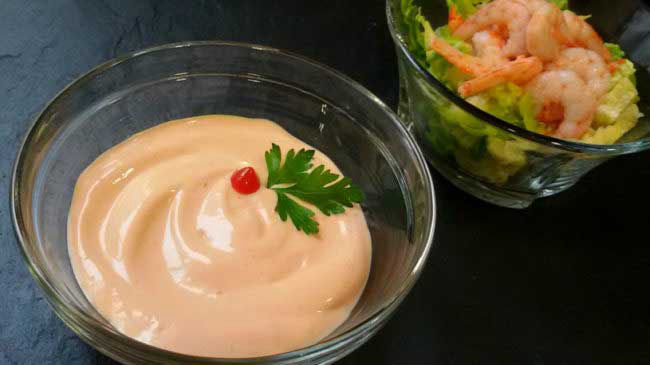
Questions and answers about sauces
In hollandaise sauce, the clarified butter is the liquid, while the thickening agent is the egg yolks. It helps to know that hollandaise sauce is particularly delicious to serve with seafood, vegetables, and eggs.
The tomato sauce, you need fresh or canned tomatoes, of good quality, as well as some sautéed vegetables such as carrots, onion and leek. Broth is added to these and slow cooking is allowed for a long time, as it is intended to thicken by itself. In the past, a roux was also used to thicken, but not currently.
In gastronomy, sauce is called a liquid mixture of hot or cold ingredients that are intended to accompany a dish. The liquid or semi-liquid consistency of a sauce can cover a very wide range that can go from puree to the most liquid of a broth. Some authors define sauce as a liquid condiment for food. Sauces not only affect the sensations of taste and smell, they can offer different colors that affect the appearance of a dish and sometimes orchestrate different sensations at the same time.
In traditional cooking courses they are part of the first chapter, since it is considered that the first skill of every cook should be the preparation of sauces. The special qualities of an elaborate sauce reflect the skills of the cook. Sauces admit many categories: by temperature (hot or cold), by flavor (sweet, spicy, sour, etc.), by content (emulsifiers, binding, etc.), by stability, etc. Despite all this, sauces are currently sold canned and are available in any supermarket.
In haute cuisine there are chefs within the kitchen organization who are specialized in the tasks of preparing the different sauces used in dishes. They are called from the French "saucier" (sauce maker). In this type of cuisine, sauce is sometimes used as a decorative element in the presentation of the bottom of some dishes.
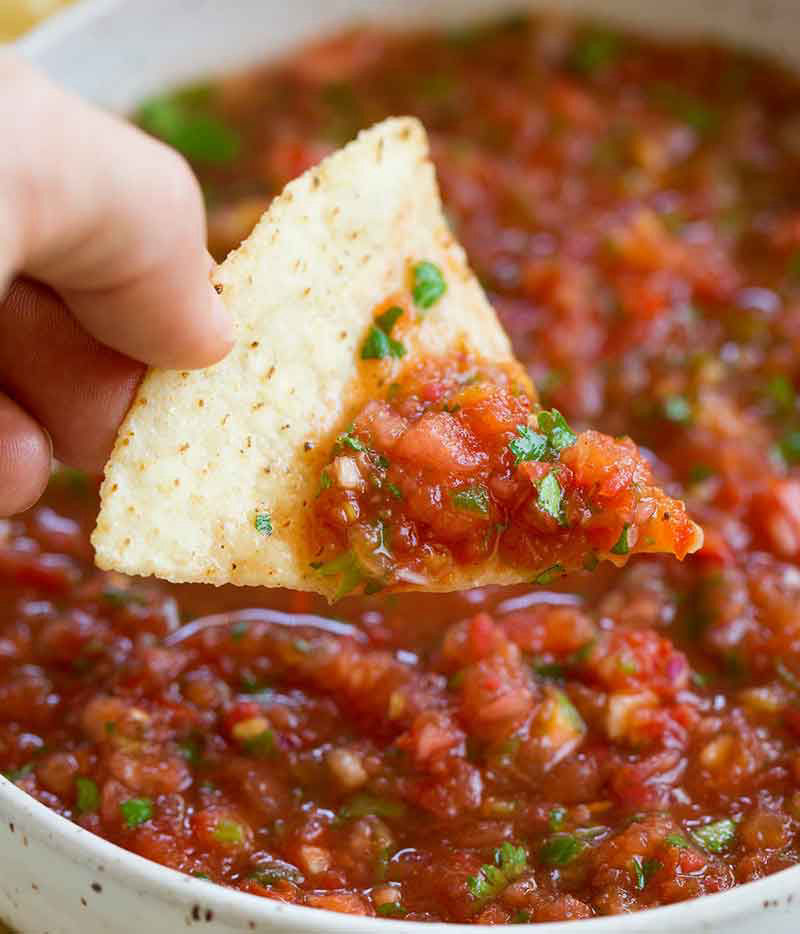
Questions and answers about sauces